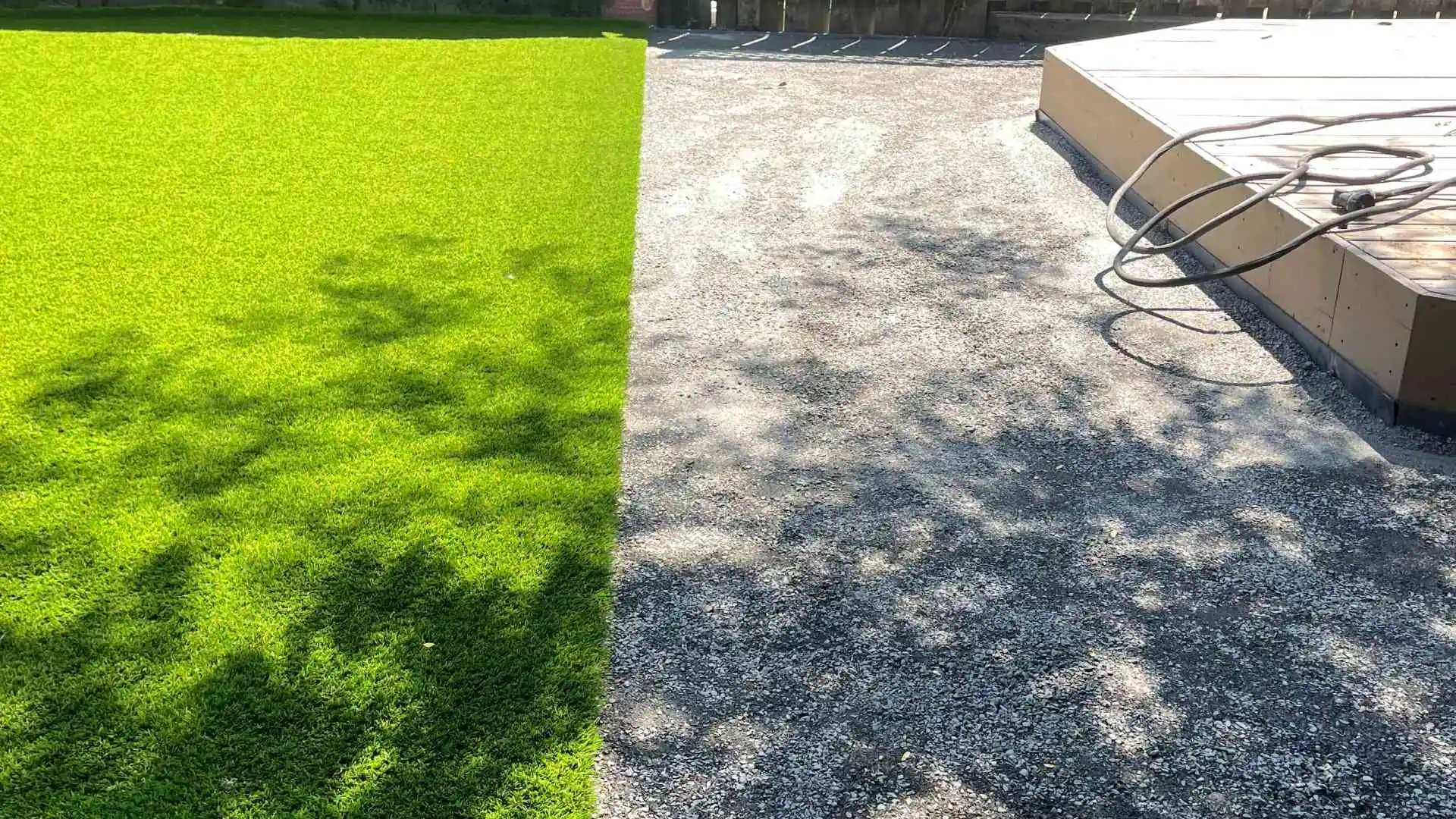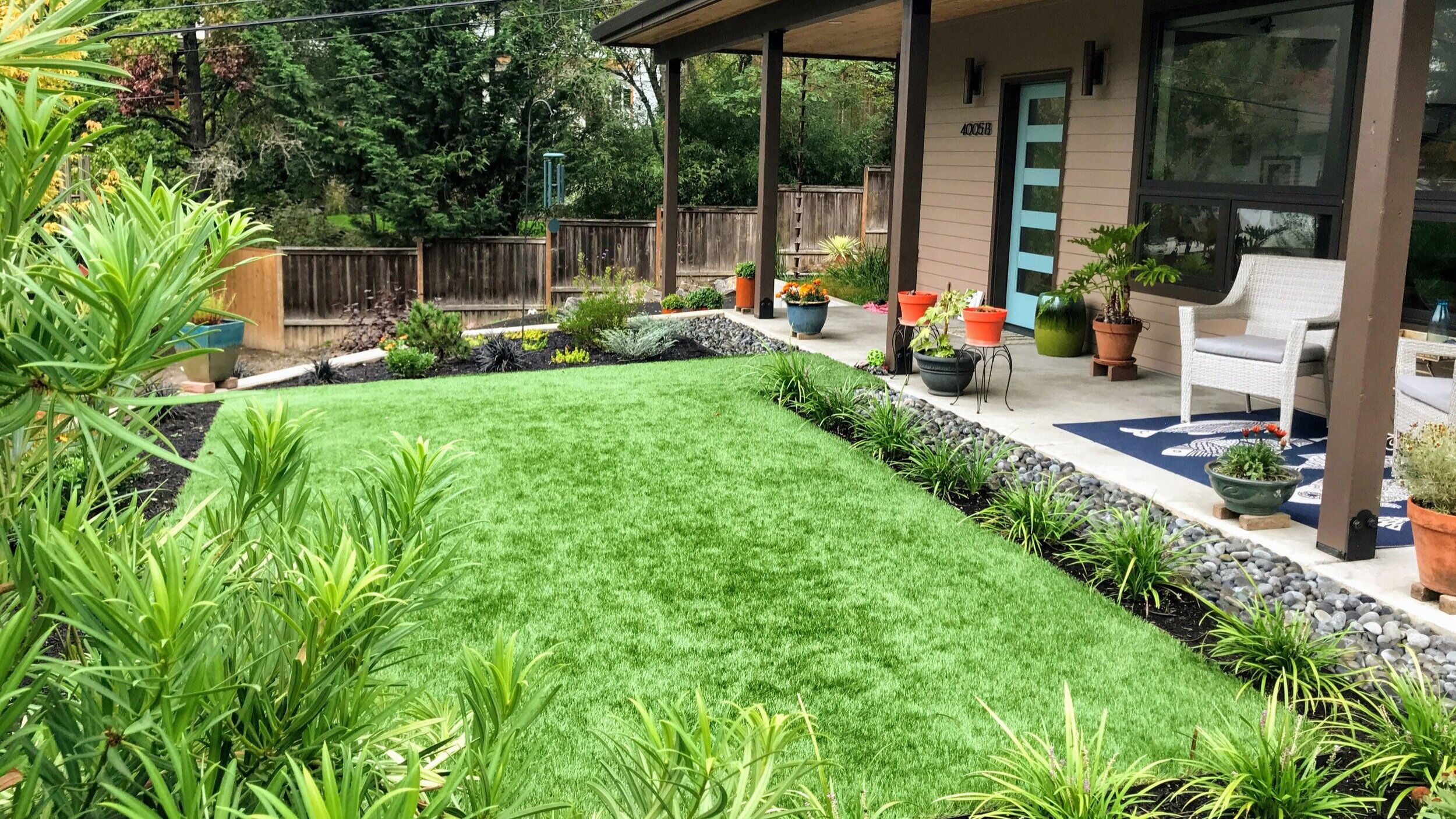Top Factors to Consider Artificial Yard for a Lavish and Low-Maintenance Yard
As home owners increasingly look for lasting solutions for outdoor areas, fabricated turf offers an appealing choice to conventional yards. The benefits extend beyond simple aesthetic appeals and sustainability; discovering the multifaceted ramifications of man-made grass exposes a comprehensive method to lawn monitoring that benefits much deeper factor to consider.
Year-Round Greenery
Among one of the most substantial benefits of fabricated lawn is its capacity to provide year-round greenery, no matter of environment problems. House owners often face challenges in keeping a vivid grass as a result of seasonal adjustments, dry spells, or hefty rains. Man-made turf removes these problems, guaranteeing a consistently rich appearance throughout the year.
This synthetic choice is crafted to hold up against diverse weather condition situations, from burning summer heat to cold winter months temperatures. Unlike natural grass, which might brown or come to be irregular during extreme conditions, synthetic grass preserves its vibrant shade and appearance, enhancing the visual appeal of any kind of landscape.
In addition, fabricated grass is immune to insects and conditions that normally impact natural grass. This durability adds to its long-lasting charm, as there is no demand for chemical therapies or fertilizers that can be harmful to the atmosphere. Furthermore, house owners can delight in the aesthetic benefits of a properly maintained lawn without the intermittent difficulties posed by natural yard care (artificial grass).
Minimized Maintenance Efforts
Man-made lawn considerably lowers maintenance efforts, enabling home owners to take pleasure in an excellent grass without the time-consuming tasks related to natural yard treatment. Among the most noteworthy advantages of synthetic lawn is the elimination of regular mowing. Without any requirement for a lawnmower, homeowners save both time and the expense of upkeep related to this tools.

Cleaning up fabricated turf is uncomplicated; an easy rinse with a tube or the occasional brushing to eliminate particles is typically adequate - artificial grass. This convenience of treatment enables property owners to invest more time appreciating their outside rooms as opposed to struggling over them. In summary, the lowered upkeep efforts related to man-made yard make it an attractive choice for those looking for an attractive, convenient backyard
Water Conservation Perks
The substantial decrease in upkeep initiatives related to artificial turf includes water preservation, making it an eco-friendly option for property owners. Standard yards need considerable amounts of water to continue to be vibrant and lush, typically bring about too much water usage, specifically in dry areas. In contrast, synthetic turf gets rid of the need for regular watering, significantly minimizing the general water usage in your lawn.
By selecting synthetic lawn, home owners can preserve countless gallons of water every year. This shift not just advantages private households yet additionally adds to broader environmental initiatives aimed at minimizing water waste. In locations experiencing water deficiency, the fostering of fabricated lawn can play a considerable role in minimizing the results of dry spell and making sure that important water resources are made use of much more efficiently.
Additionally, the setup of artificial lawn can help reduced community water demand, profiting the neighborhood as a whole. With expanding awareness of ecological concerns, selecting artificial yard functions as an aggressive action towards lasting landscaping, aiding to protect all-natural water sources while maintaining an aesthetically pleasing exterior space (artificial grass installation). In recap, man-made turf offers a compelling option for water preservation, lining up ecological obligation with modern-day landscaping requirements

Pest and Allergy Reduction
A substantial benefit of setting up synthetic grass is its ability to reduce pests and allergens in outside areas. Standard turf lawns frequently work as breeding grounds for pests such as insects, ticks, and ants, which can produce discomfort and wellness dangers for households and family pets. In comparison, man-made turf removes the organic material that brings in these parasites, consequently significantly reducing their populations in your backyard.
Additionally, natural yard can harbor mold and mildew, plant pollen, and other irritants, which can set off allergic reactions and breathing concerns for delicate people. Artificial grass provides a cleaner atmosphere, decreasing the potential for allergenic reactions. Unlike all-natural lawn, synthetic grass does not create pollen, making it a superb choice for allergic reaction patients looking for to enjoy their outdoor rooms without the risk of flare-ups.
In addition, the absence of soil in synthetic grass indicates there is less dust and dust, further lessening airborne irritants. This low-maintenance choice not only boosts the aesthetic charm of your backyard but likewise advertises a healthier exterior environment, enabling families to appreciate their artificial grass canoga park grass without the constant concern of parasites and allergens. Therefore, fabricated turf is a critical selection for those focusing on comfort and wellness in directory their outdoor living areas.
Long-Term Expense Financial Savings
Buying artificial turf can result in considerable lasting price savings for property owners. While the initial investment might appear substantial, the economic advantages in time can be significant. Man-made yard eliminates the need for regular lawn upkeep costs, such as mowing, fertilizing, and watering. Traditional yards usually call for significant sources to preserve a lavish look, specifically in locations vulnerable to drought or extreme weather.
Furthermore, the longevity of artificial lawn additionally improves its cost-effectiveness. Many premium synthetic turf products can last 15 to 25 years with very little upkeep, lowering the requirement for replacement or extensive repairs. In contrast, natural lawn may call for constant reseeding and normal treatment, which can swiftly build up in prices.
Energy savings are one more vital aspect. Homeowners can expect to see lower water costs, as synthetic grass does not need irrigation. In addition, the reduction in yard care solutions can free up beneficial time and resources, permitting house owners to assign their budgets somewhere else.
Conclusion
In summary, synthetic lawn offers numerous advantages for property owners looking for a vibrant and low-maintenance landscape. Eventually, the long-lasting expense financial savings associated with synthetic grass strengthen its condition as a lasting and sensible remedy for boosting exterior rooms.
Artificial grass substantially lowers upkeep initiatives, permitting home owners to enjoy a pristine yard without the lengthy tasks connected with natural grass care.The substantial reduction in upkeep initiatives connected with synthetic turf extends to water preservation, making it an ecologically friendly option for homeowners. In comparison, fabricated turf gets rid of the requirement for regular watering, dramatically minimizing the overall water consumption in your lawn.
In locations experiencing water scarcity, the fostering of fabricated lawn can play a significant role in reducing the effects of dry spell and making sure that important water resources are used much more effectively.
With growing go to this web-site recognition of ecological issues, picking synthetic grass offers as a positive step towards lasting landscape design, assisting to preserve all-natural water sources while keeping a visually pleasing exterior area.